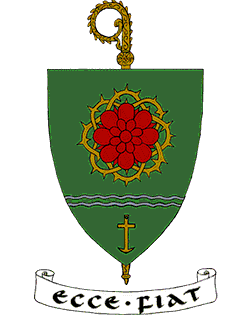Look, the storm of the Lord!
Wrath has gone forth,
a whirling tempest;
it will burst upon the head of the wicked.
The anger of the Lord will not turn back
until he has executed and accomplished
the intents of his mind.
—Jeremiah 23:19-20
Dear Friend of Clear Creek Abbey,
In a world gone mad, where charity has grown cold and there is nothing less common now than common sense; in a time when religious persecution wears many masks and when all that is truly human is under attack by global strategies of the “culture of death”—targeting with especial virulence the family—we monks move forward in our own way, as boldly as possible, but treading softly. Under this winter landscape new life is real but hidden in the ground. New saints are being formed and a new generation of young souls is emerging to carry on the ancient and ever renewed quest for justice and authentic peace according to the mind of God. But for the moment the ground is frozen. Worse still, a great winter storm is sweeping the Catholic world.
In one of his essays entitled The Angel of the Storm, John Senior invokes “The Buckwheat,” the classic fairytale of Hans Christian Andersen:
Very often, after a violent thunder-storm, a field of buckwheat appears blackened and singed, as if a flame of fire had passed over it. The country people say that this appearance is caused by lightning; but I will tell you what the sparrow says, and the sparrow heard it from an old willow-tree which grew near a field of buckwheat, and is there still. It is a large venerable tree, though a little crippled by age. The trunk has been split, and out of the crevice grass and brambles grow. The tree bends forward slightly, and the branches hang quite down to the ground just like green hair… The buckwheat did not bend like the other grain, but erected its head proudly and stiffly on the stem. “I am as valuable as any other corn,” said he, “and I am much handsomer; my flowers are as beautiful as the bloom of the apple blossom, and it is a pleasure to look at us. Do you know of anything prettier than we are, you old willow-tree?”…
There arose a very terrible storm. All the field-flowers folded their
When the dreadful storm had passed, the flowers and the corn raised their drooping heads in the pure still air, refreshed by the rain, but the buckwheat lay like a weed in the field, burnt to blackness by the lightning.
And John Senior draws the conclusion in the form of a question, “Do you really think there are angels of the storms?”
For the sons of St. Benedict, the great monastic virtue that rules our lives is humility. While holding fast to the first principles of the Catholic faith and monastic life, it is our business to imitate the humble willow tree and the flowers rather than the proud buckwheat under the fury of the Angel.
In an address given in 1983, Senior used the same story about the willow and the buckwheat to suggest that, indeed, a storm was coming to shake not only the world—but the Church as well. The moral of the story is that the way to endure this storm lies not in an attitude of arrogance and defiance, but in the very Christian virtue of holy humility.
It is my intention in this Year of Our Lord MMXX to recommence construction on our monastic church and to begin work on other buildings if possible. Our numbers have now grown to the point where there is almost no room left for new candidates to the monastic life. We know we can count on your prayers and material support, each according to his means. Not only do we mean to continue to build Something Beautiful for God—a Monastery to last a Thousand Years—but we also see it as a house built to stand, by the grace of God, through many a storm.
br. Philip Anderson, abbot



